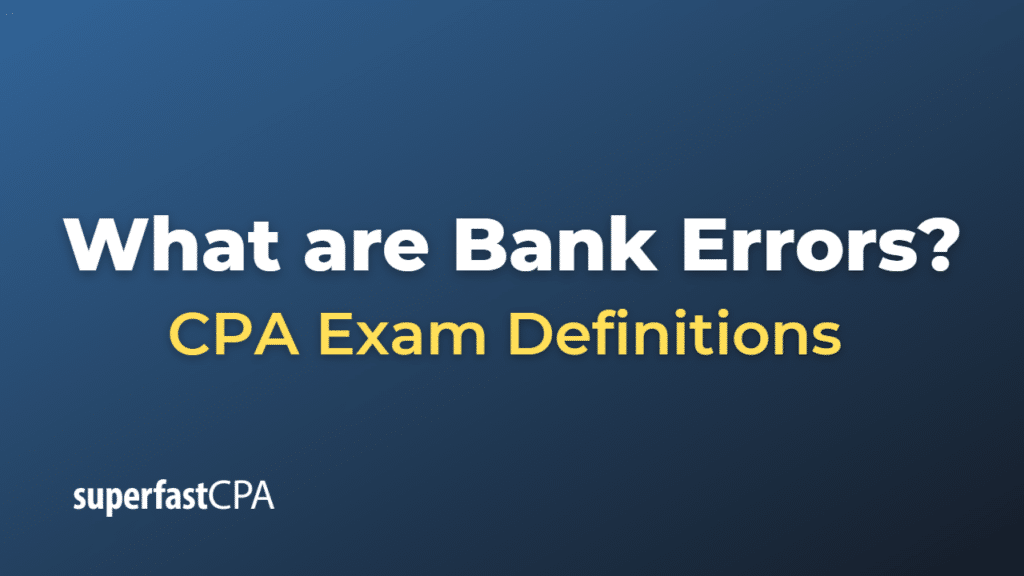Bank Errors
Bank errors are mistakes or inaccuracies that occur during the processing or recording of financial transactions by a bank or financial institution. These errors can result from human error, technical glitches, or system failures, and they can impact account balances, transaction records, or statements. Bank errors can involve deposits, withdrawals, transfers, debits, or other banking activities.
Some examples of bank errors include:
- Incorrect deposit or withdrawal amounts: The bank may accidentally credit or debit an incorrect amount to your account, resulting in an inaccurate account balance.
- Duplicate transactions: The bank may mistakenly process a transaction more than once, leading to a double charge or double credit.
- Misapplied payments: A payment you made to a specific payee may be applied to the wrong account or not applied at all.
- Erroneous fees or charges: The bank may accidentally charge you a fee or interest that you should not be responsible for, or they may fail to apply a fee waiver or discount that you’re entitled to.
- Mistaken identity: The bank may accidentally credit or debit your account for transactions made by another customer with a similar name or account number.
It’s essential to regularly monitor your account transactions, statements, and balances to identify any potential bank errors. If you discover a bank error, you should promptly report it to your bank or financial institution. They are typically required to investigate the issue and correct any errors in a timely manner. Keeping accurate records of your financial transactions and maintaining clear communication with your bank can help prevent and resolve bank errors.
Example of Bank Errors
Let’s consider an example of a bank error involving an incorrect deposit amount.
Imagine you deposit a check for $2,500 into your checking account using your bank’s mobile app. Due to a technical glitch in the app’s check scanning feature, the system reads the amount as $250 instead of $2,500. As a result, your account is credited with only $250, which is $2,250 less than the actual check amount.
When you review your account balance and transactions, you notice the discrepancy between the deposited amount and the actual value of the check. Realizing that there has been a bank error, you take the following steps:
- Gather documentation: You collect the physical check, the mobile deposit confirmation, and any other relevant documentation that shows the correct deposit amount.
- Contact the bank: You promptly call your bank’s customer service department, explain the situation, and provide the necessary documentation as proof of the error.
- Follow up: The bank investigates the issue, confirms the error, and corrects the deposit amount in your account by crediting the missing $2,250. Your account balance is now accurate, reflecting the correct deposit of $2,500.
In this example, regularly reviewing your account transactions allowed you to identify the bank error and take appropriate action to have it corrected. By maintaining clear communication with your bank and providing the necessary documentation, you were able to resolve the issue and ensure your account balance was accurate.













